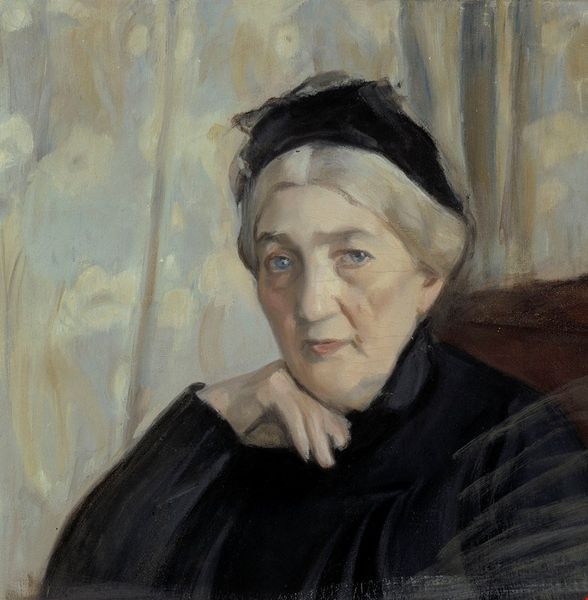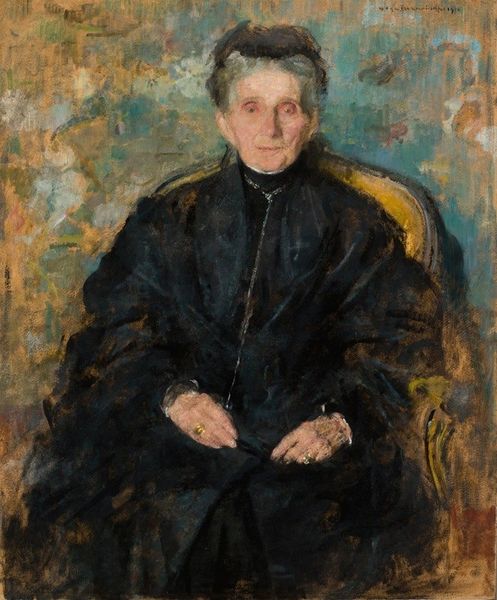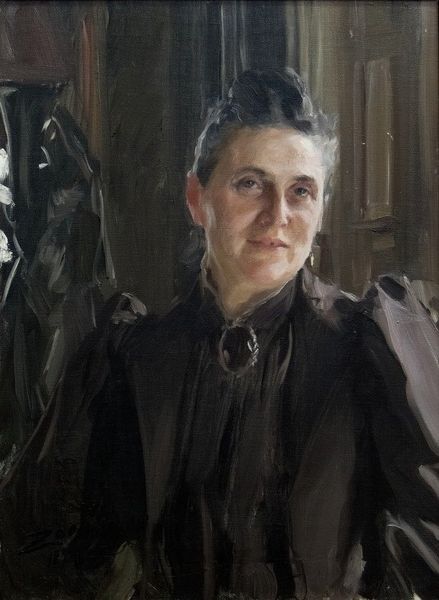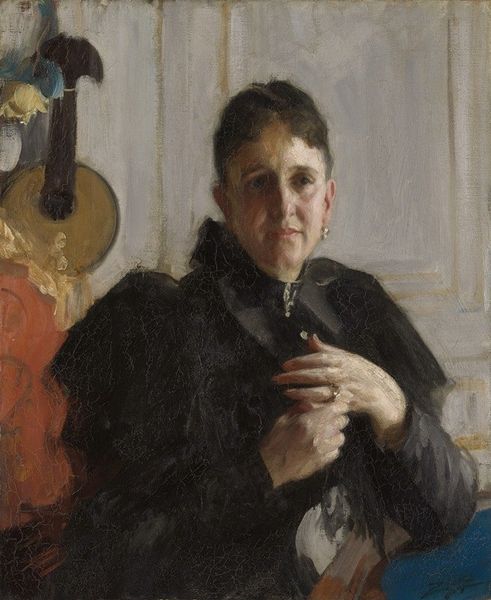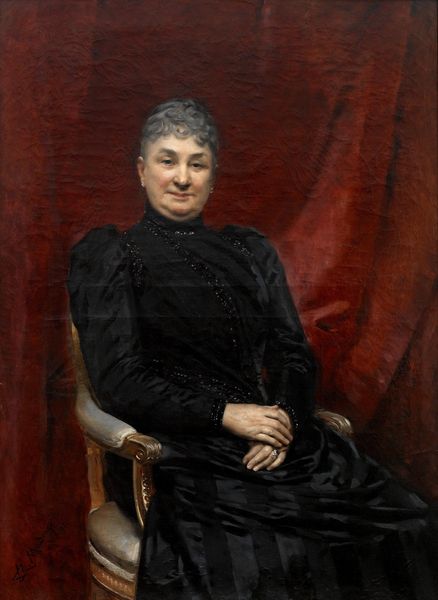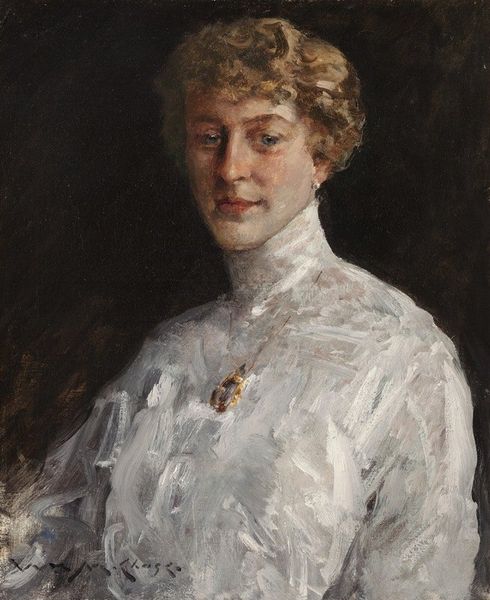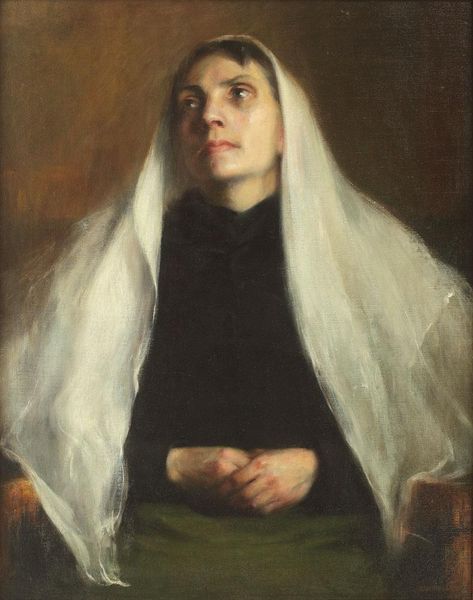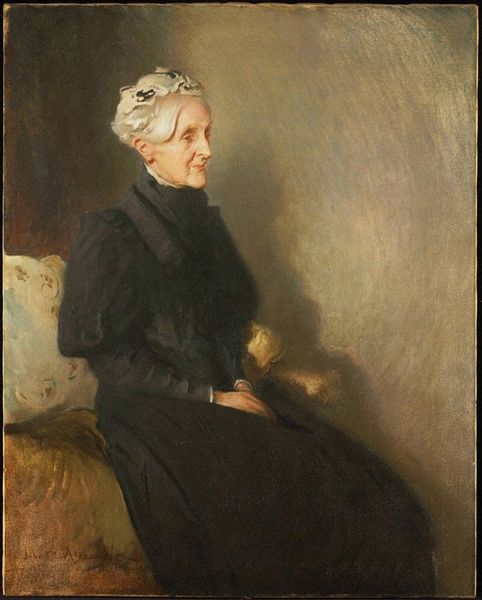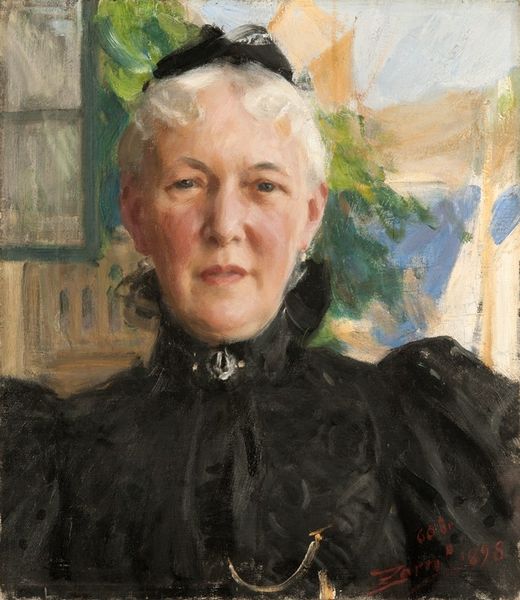
Copyright: Public Domain: Artvee
Anders Zorn painted "Maria Sheldon Scammon" in 1898. It is a painting that reflects the social position of women during the Gilded Age in America. Maria Scammon was part of the upper class of American society, reflected in the austere but elegant black dress, likely for mourning, and the pearl earring. As the wife of a wealthy lumber baron, her status was defined by her husband's success and her role in maintaining social decorum. The portrait itself, commissioned from a European artist, speaks to the cultural capital that families like the Scammons sought to acquire. Zorn, a Swedish artist, gained popularity among the American elite for his ability to capture the likeness and social standing of his sitters. His style, characterized by loose brushwork and a focus on capturing the essence of the individual, appealed to a clientele that valued both tradition and modernity. Understanding this painting requires delving into the economic and social structures of the late 19th century, examining the patronage networks that supported artists like Zorn, and considering the gendered expectations placed on women of the upper class. Historical archives and biographical research can illuminate the complex interplay of art, wealth, and social identity.
Comments
No comments
Be the first to comment and join the conversation on the ultimate creative platform.
